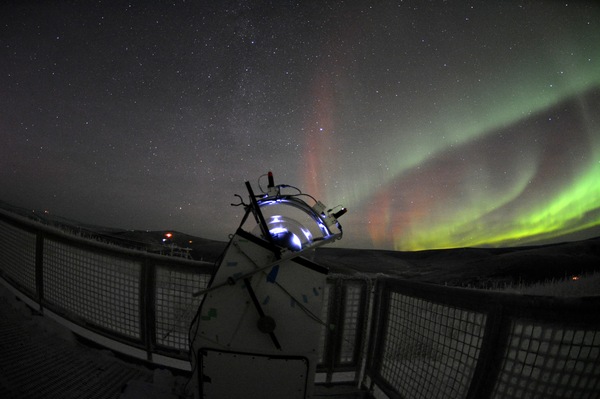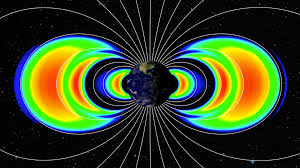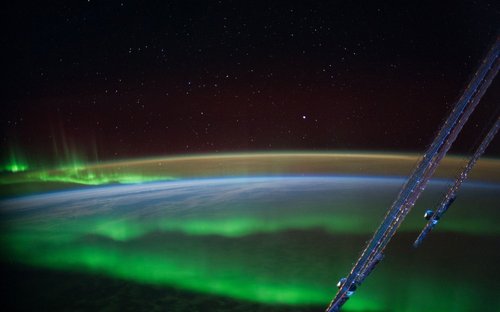Aurora and Airglow, Earth’s Upper Atmosphere, Ionosphere, Magnetosphere and Radiation Belt
This post is also available in: Japanese
Auroral phenomena and polar ionosphere
We focus on discrete aurora related with Alfvenic acceleration as well as pulsating and black auroras produced by pitch-angle scattering using the data taken with Reimei. We succeded to detect the resonant scattering of nytrogen ion in the topside ionosphere from the ground-based spectrograph data at Longyearbyen. We also investigate auroral polarization based on the ground-based data at Poker Flat, Alaska. In addition, we concern the relationship between Omega-band type aurora and high-energy precipitating electrons using the data taken with EISCAT/ESR and optical network in Scandinavia. Further, low-latitude aurora event is studied with the visible and near-infrared spectrograph on the international space station.

Fig. Auroral polarization imager at Poker Flat, Alaska.
Variation of the Earth’s radiation belt
Highly energetic particles are trapped by the Earth’s magnetic field, forming inner and outer radiation belts. We have installed particle detectors on board satellites and have been performing continuous observations of highly energetic particles in the radiation belts. Results revealed loss processes of the outer belt electrons during the magnetic storms. Further research is being made, paying a particular attention to the new radiation belt formation.

Fig. Schematic drawing of the Earth’s radiation belts.
Ionosphere and Thermosphere at mid- and low-latitudes
Recently, many researchers have examined the vertical relationship between lower-atmosphere and upper atmosphere up to several hundreds km. We are investigating airglow emissions in the upper atmosphere using the data taken by a visible and near-infrared spectrograph (IMAP/VISI) on the international space station, particularly focusing on the concentric gravity waves (CGWs) in the O2 A-band which are useful to understand the causal relationship between ground and upper atmosphere. From the three years observation of IMAP/VISI, we found 235 CGWs events and clarified the source and seasonal variations.

Fig. Airglow and auroral images taken from the international space station. (c) NASA
This post is also available in: Japanese
